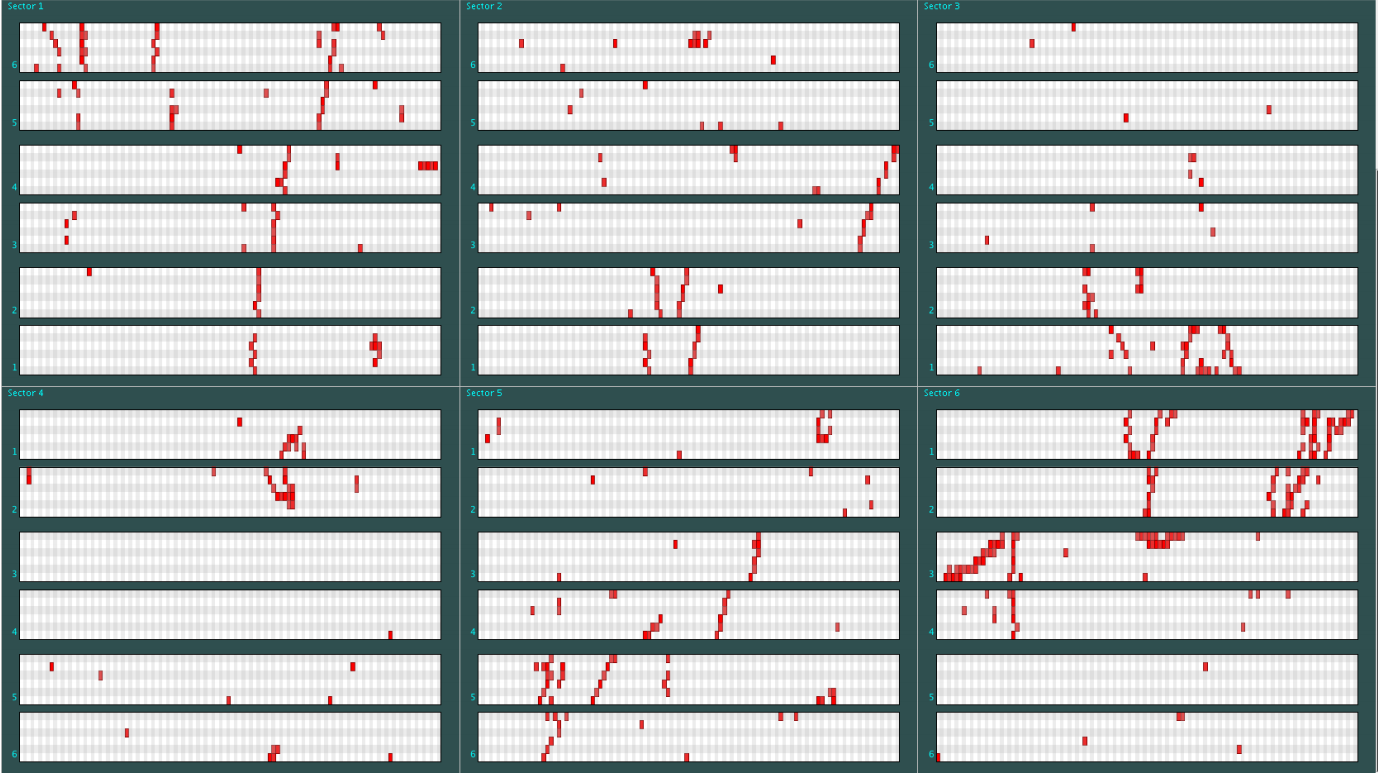CNF:Machine Learning
This is the page for the CNF-Machine Learning project. It will be updated frequently with reports about the progress of the project.
Contents
The Problem
Traditional tracking algorithms are computationally intensive, especially for high luminosity experiments with multi-track final states where all combinations of segments in drift chambers have to be considered for firing best track candidates. At high luminosity the number of random segments (unrelated to the tracks) are increasing and as a result the number of possible combinations also increases, making the whole process longer.
The Goal
Using machine learning one can recognize the patterns that are valid in order to find the correct track faster. The model will be trained on real pre-labeled data and as an outcome, it will be able to label track combinations as valid or not.
The Data
The drift chambers consist of 6 layers, of 6 wires, of 112 sensors each for a total of 4032 sensors (see picture on the right). The data provided let us know whether a sensor has detected a hit or not. Those detections might be part of the trajectory that we want to track or can be irrelevant (noise). The labeled data consist of all the possible combinations that form a track as rows (events) and the state of each sensor (detected something or not) as columns (features). The label provides information on whether a combination produces the valid track or not. An example of the input to be used by the model can be found in [1].
Timeframe
Week 1
Create the pipeline
- Load data in Spark Dataframes
- Split data in training/validation sets
- Experiment with different classification methods
- Tree-based
- SVM
- Train Model
- Validate
- Report accuracy and confusion matrix
Multilayer Perceptron (80/20 split)
Accuracy: 0.9531938325991189
Confusion matrix: | 933 79| | 91 2529|
k-Nearest Neighbors
Accuracy: 0.916 Confusion matrix: |1861 165| |448 4790|
Linear SVM
Accuracy: 0.7563325991189427 Confusion matrix: |409 1617| |153 5085|
RBF SVM
Accuracy: 0.7210903083700441 Confusion matrix: |0 2026| |0 5238|
Gaussian Process
Accuracy: 0.7210903083700441 Confusion matrix: |0 2026| |0 5238|
Decision Tree
Accuracy: 0.7231552863436124 Confusion matrix: |134 1892| |119 5119|
Random Forest
Accuracy: 0.7210903083700441 Confusion matrix: |0 2026| |0 5238|
Neural Net
Accuracy: 0.900330396475771 Confusion matrix: |1516 510| |214 5024|
AdaBoost
Accuracy: 0.7221916299559471 Confusion matrix: |237 1789| |229 5009|
Naive Bayes
Accuracy: 0.3553138766519824 Confusion matrix: |1983 43| |4640 598|
QDA
Accuracy: 0.7581222466960352 Confusion matrix: |384 1642| |115 5123|
